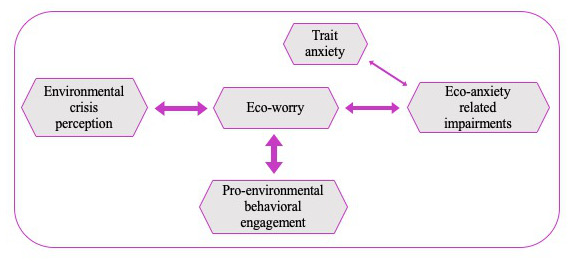CHARACTERIZING AND UNDERSTANDING ECO-ANXIETY: THE IMPORTANCE OF ECO-WORRY
Eco-anxiety is a growing phenomenon in the current context of climate change and other environmental issues. This reaction of chronic fear of a future environmental disaster has so far been little characterized. In particular, the first question is to understand how this reaction is associated with an increased perception of the reality of the environmental crisis and the associated threats, and how it is associated with an individual tendency towards anxious reactions. There is also the question of the extent to which this reaction is constructive, in the sense that it is associated with a commitment to pro-environmental behaviors. The results obtained to date differ according to the eco-anxiety measures used, which consider either the level of worry or the level of associated cognitive (e.g. difficulty concentrating), emotional (e.g. crying) and functional (e.g. difficulty enjoying socialising) impairments. To answer these questions, in collaboration with the Chrome laboratory at the University of Nîmes, Marie-Laure Parmentier in the team headed by Philippe Marin used measures of anxiety-trait (STAI), perception of the environmental crisis, pro-environmental commitment and, for the eco-anxiety reaction, scales of eco-worry (this study) and alterations or impairments associated with eco-anxiety (CAS scale) on a sample of 431 people. Our results show 1) that eco-worry acts as an intermediary between the perception of environmental crisis and the appearance of associated impairments, 2) that trait anxiety is weakly associated with levels of eco-anxious reaction compared with other variables such as the perception of environmental crisis, 3) that engagement in pro-environmental behaviors is mostly associated with the degree of eco-worry, with no significant contribution from the level of eco-anxious impairments. This study highlights the importance of differentiating levels of eco-worry and of cognitive, emotional and functional alterations in order to better understand the eco-anxiety reaction, its causes and consequences.

Diagram of the relationships highlighted between the two aspects of the eco-anxious reaction (eco-worry and the appearance of eco-anxious impairments), and the degree of perception of the environmental crisis, the level of anxiety in general and the engagement in pro-environmental behaviors.


